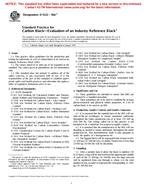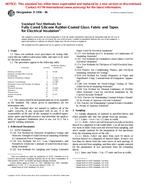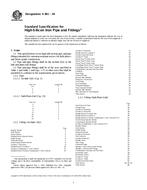1.1 This test method covers the determination of transmissivity from the measurement of force-free (overdamped) response of a well-aquifer system to a sudden change of water level in a well. Force-free response of water level in a well to a sudden change in water level is characterized by recovery to initial water level in an approximate exponential manner with negligible inertial effects.
1.2 The analytical procedure in this test method is used in conjunction with the field procedure in Test Method
1.3 Limitations -Slug tests are considered to provide an estimate of transmissivity. The determination of aquifer storage coefficient is less reliable. Although the assumptions of this test method prescribe a fully penetrating well (a well open through the full thickness of the aquifer), the slug test method is commonly conducted using a partially penetrating well. Such a practice may be acceptable for application under conditions in which the aquifer is stratified and horizontal hydraulic conductivity is much greater than vertical hydraulic conductivity. In such a case the test would be considered to be representative of the average hydraulic conductivity of the portion of the aquifer adjacent to the open interval of the well.
1.4 The values stated in SI units are to be regarded as standard.
1.5 This standard does not purport to address all of the safety concerns, if any, associated with its use. It is the responsibility of the user of this standard to establish appropriate safety and health practices and determine the applicability of regulatory limitations prior to use.
Product Details
- Published:
- 10/10/1996
- Number of Pages:
- 4
- File Size:
- 1 file , 74 KB


